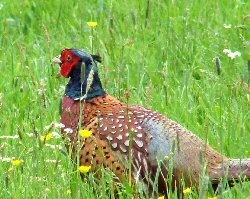lecture menu
lecture 5: acquiring images
Images are separate files, just like HTML files or style sheets. We will see shortly that the <img> tag acts as a "pointer" to the actual image file. When you have an image file which you want to use on your site, save it in the same folder as the other files. Image files therefore become just as much a part of your site as your HTML or style sheet files.
Certain simple images can be produced "from scratch". For instance, the graph reproduced a couple of slides ago was produced in Excel. The "Naxos" banner on the previous slide was produced using Adobe's Illustrator (a good - if expensive - package for graphic designers). But more likely is that you will be using an image which has been digitised from some other medium.
To digitise something means to convert it to material which computers can understand. Basically, this means the digits 0 and 1. Music, for instance, is digitised when it is stored on CDs or .mp3 files. It is not digitised on cassette tapes or vinyl - these are known as "analogue" media - it is not necessarily inferior, but it tends to be harder to copy as you inevitably lose quality each time you do so. The two main types of hardware which can digitise images are scanners and digital cameras. Scanners tend to be used for things that are already in some kind of printed format e.g. photos, books (although I'm sure everyone's scanned a body part at some point). Digital cameras are increasingly common, however. If you have one, you probably already know how to use it to get photographs into your computer: but please do read the warnings on the next slide before you place them straight onto your web pages. |  This image was acquired using a digital camera (and a quiet photographer) |
Another, and much simpler, way to get hold of images is simply to acquire them from other web pages. You can right-click over any image online and choose "Save Picture As..." from the menu which appears. (Try it with the picture of the pheasant.) Small images such as buttons, icons and so on - like the stars on the last slide - can be found on sites which exist precisely to supply you with them (try http://www.freebuttons.com for instance). Other images like photographs can be acquired in a similar way. BUT - and this is a big "but" - you MUST be aware of copyright here. Lecture 6 will go into the issue of copyright in some detail but do not underestimate the problems you can get into if you breach copyright on your web page. So be sure you are using out-of-copyright material on your site. As I said, more in the next lecture.
